Project Glossary
The TRIGGER glossary has been created by its multidisciplinary consortium with the aim to promote common understanding and collaboration, embracing the principles of Open Science. It serves as a documentation tool, preserving and transferring knowledge while ensuring accessibility and transparency. The glossary enables the consortium to freely share ideas and perspectives beyond disciplinary boundaries, advancing collective knowledge.
It also adheres to the Open Science principles of open access and information sharing. Moreover, it supports research reproducibility and accountability, fostering an inclusive and collaborative environment.
The glossary is structured into three levels. The first level encompasses terms that are more closely related to the project aims and scope of work. The second level focuses on terms coming from specific disciplines, and the third provides specialized and detailed knowledge within each discipline. This hierarchy enhances understanding and accessibility, facilitating effective communication among consortium members and comprehension of the content by others outside the consortium.
CLIMATE
1st Level Climate Science
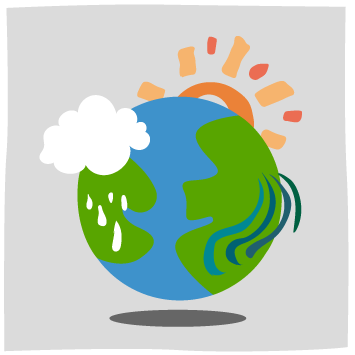
The general weather conditions in a given area over a long period of time (at least 30 years), are defined in a statistical sense (i.e., means, variations from the mean, extremes, etc.).
Climate change
1st Level Climate Science

Any long-term change in the statistics of climate elements such as, for example, temperature, precipitation or winds.
Climate prediction
1st Level Climate Science | Meteorology

The prediction of several aspects of the climate of a region during some future period of time (from months to several seasons).
Climate Projection
1st Level Climate Science
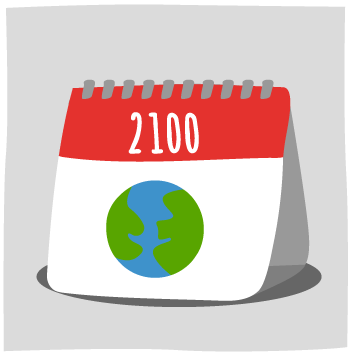
Simulation of Earth’s climate in future decades (typically until 2100 or longer) based on assumed ‘scenarios’ for the concentrations of greenhouse gases, aerosols, and other atmospheric constituents that affect the planet’s radiative balance.
Climate variability
1st Level Climate Science

The time variations of the climate system around a mean state. Typically, climate variability is defined for timescales of months to millennia (hence weather variations are not considered as climate variability).
Environmental impacts
1st Level Economics
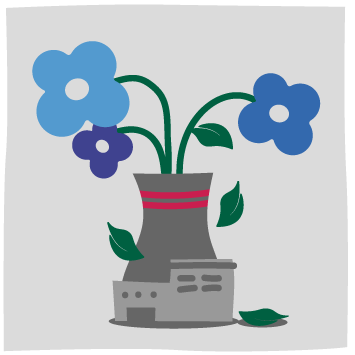
Effects that economic activities have on the environment, such as, for instance, the emissions of pollutants as greenhouse gases emissions and other gases as acidifying gases and ozone-depleting gases.
Extreme event
1st Level Statistics | Atmospheric Science | Climate Science | Meteorology
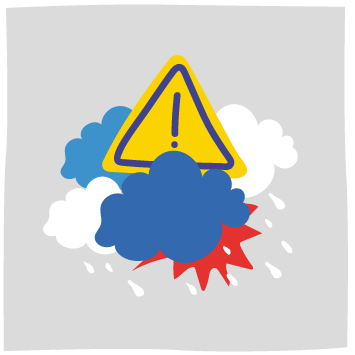
Intense weather or climate phenomena that usually have a high return time – taking up to several decades before an event of the same intensity occurs again.
Forecast
1st Level Mathematics | Physics | Meteorology
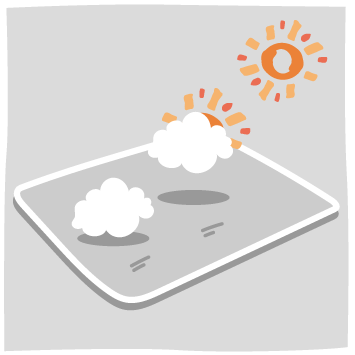
A calculation or a prediction of some future event or state of a physical system given an initial condition of the system.
Health
1st Level Medicine
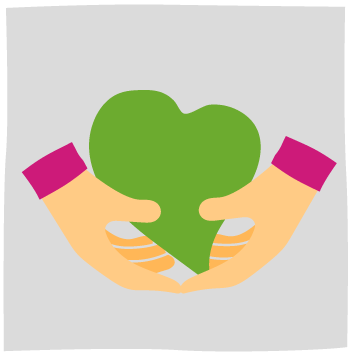
Health is defined as a relative state in which one can function well physically, mentally, socially, and spiritually to express the full range of one’s unique potentialities within the environment in which one lives.
Numerical simulation
1st Level Mathematics | Physics | Atmospheric Science | Meteorology | Climate Science
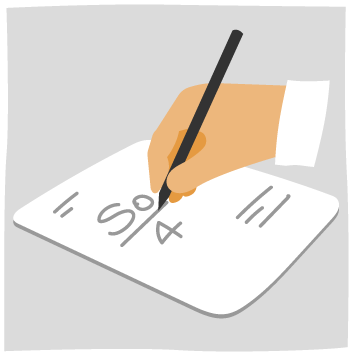
A numerical integration (i.e., solving) of a model aimed at studying the behaviour of the solution as compared to the initial conditions.
Practitioner
1st Level Climate Change
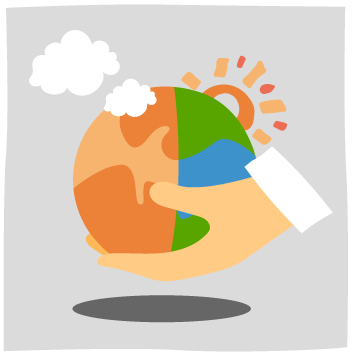
W.r.t Climate Change
A practitioner is defined as skilled professionals actively engaged in the development and application of practical responses to global challenges and include professionals such as practitioners in public authorities, policymakers, decision-makers, engineers, investors, etc.
Scenario
1st Level Climate Science
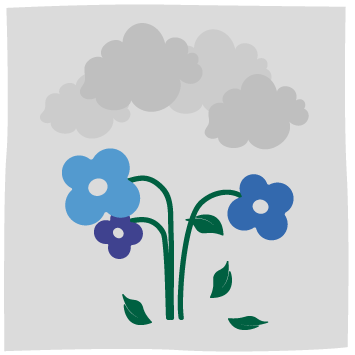
A plausible image of a future climate based on knowledge of the past climate and assumptions on future greenhouse gas (GHG) emissions.
Sector
1st Level Economics
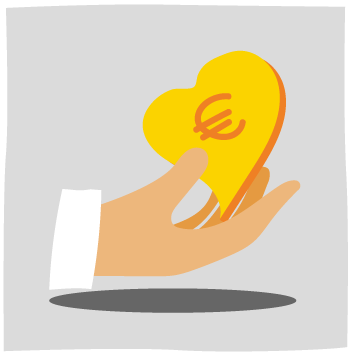
Refers to a group of economic activities that produce goods or services. Sectors can be defined at various levels of aggregation, ranging from broad categories such as agriculture, manufacturing, and services, to more specific categories such as automobile manufacturing or retail trade. Sectors provide a way to organize and group together different industries that have similar inputs and outputs. Each sector is represented in an input-output table by a row and a column, with the row representing the sector’s output or production, and the column representing the sector’s input or use of goods and services produced by other sectors.
Stakeholder
1st Level Climate Change | Business
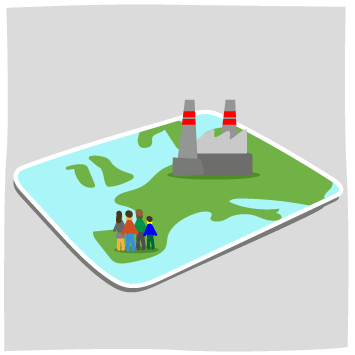
W.r.t Climate Change/the Project
The key stakeholders in climate change exist within systems (such as regions, industries, and communities) that are exposed to and sensitive to the potential impacts of extreme weather events, sea level rises, temperature increases etc.
W.r.t Business
In business terminology, the term stakeholder refers to a party that has an interest in a company and can either affect or be affected by the business. The primary stakeholders in a typical corporation are its investors, employees, customers, and suppliers. With increasing attention to corporate social responsibility, the concept has been extended to include communities, governments, and trade associations.
Stakeholder analysis
1st Level Climate Change
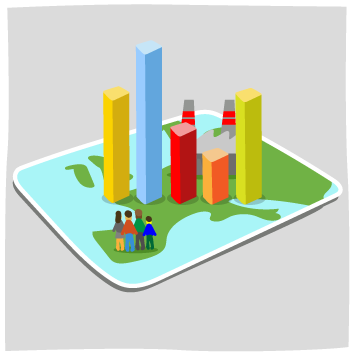
Stakeholder analysis is a process that: (i) defines aspects of a social and natural system affected by a decision or action, (ii) identifies individuals and groups who are affected by or can affect those parts of the system (this may include non-human and non-living entities and future generations), and; (iii) prioritizes these individuals and groups for involvement in the decision-making process.
Stakeholder Mapping
1st Level Climate Change
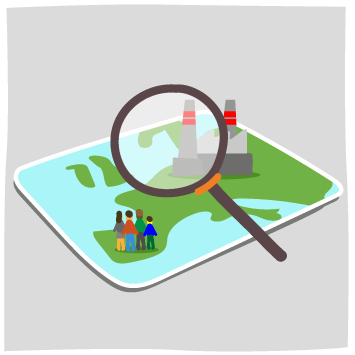
Stakeholder mapping is a basic tool for achieving an understanding of potential roles of the stakeholders and institutions involved, for identifying potential coalitions of support for the project, for scenario and strategy building and for assessing the relative risks entailed.
Weather
1st Level Atmospheric Physics | Meteorology

The conditions of the atmosphere at a particular time and place, in terms of temperature, moisture, cloudiness, etc.
Amortization/Depreciation
2nd Level Business
A term used to distribute CAPEX in the annual account over the technical or economic lifetime of an asset.
Business model
2nd Level Business
A company’s plan for making a profit for defined products/services, to an identified target market and taking into account expected costs.
Business opportunity
2nd Level Business
Is a term often used to describe how a commercial profit can be generated through allocating business resources to exploit a situation.
Business plan
2nd Level Business
A document that described in detail a company’s objectives and how it plans to achieve its goals, covering a variety of aspects related to running the business such as: financial planning, business model, marketing, market, value and supply chain, product/service or solution, management, risks etc.
CAPEX
2nd Level Business
Capital spending. Money spent on new assets or replacing or upgrading existing assets. Amortization of CAPEX is registered on the balance sheet and has an impact on profit.
Cash flow
2nd Level Business
Refers to the net amount of cash and cash equivalents being transferred in and out of a company. Cash received represents inflows, while money spent represents outflows.
Climate service
2nd Level Climate Science
A decision aid derived from climate information that assists individuals and organizations in society to make improved ex-ante decision-making.
Commercial exploitation
2nd Level Business
Involves “developing, creating, manufacturing and marketing a product or process, creating and providing a service, or in standardisation activities.”
Customer
2nd Level Business
An individual, business or institution that purchases another company’s goods or services for its own or someone else’s use. Customers and users of a particular product/service might be different target groups.
EBIT
2nd Level Business
Often used accounting term describing: Earnings Before Interest and Tax.
EBITA
2nd Level Business
Often used as an accounting term describing: Earnings Before Interest, Tax and Amortization.
Economic efficiency
2nd Level Economics | Health Economics | Policy Making
Economics efficiency measures whether resources (e.g., healthcare resources) are being used to get the best value for money. Adopting the criterion of economic efficiency implies that society makes choices which maximize the health outcomes gained from the resources allocated to healthcare.
Economic evaluation
2nd Level Economics | Health Economics | Policy Making
The comparative analysis of alternative courses of action (treatments, interventions, policies, etc.) in terms of both their costs (use of resources) and consequences (outcomes, effects) in order to assist policy decisions.
Economic impacts
2nd Level Economics
An effect that a particular event has on the economy as a whole or on specific sectors within the economy. These effects can be measured on specific concepts such as gross domestic product, output, value-added, employment, or final demand, among others.
Economic interdependencies
2nd Level Economics
Refer to the interconnectedness of different sectors in an economy, whereby the production of one sector depends on the goods and services that supply intermediate inputs produced by other sectors. There are also economic interdependencies between the final demand such as households, governments and exports with the sectors that produce the final goods and services that are ultimately driven by the demand from these agents.
Employment
2nd Level Economics
Number of jobs required in an industry or sector of the economy to produce a given level of output of the industry or sector.
Exploitation
2nd Level Business | EU Grants
The exploitation of project results, defined as the use of results in further activities other than those covered by the project concerned, can take different routes: societal, political, policy-oriented, aimed at improving public knowledge and action, or commercial.
Financial budget
2nd Level Business
Financial plans which outline projections on incomes and expenses on both a long-term and a short-term basis.
Funding types (sources of funding)
2nd Level Business
In the early stages of business development, external funding might be needed in order to cover the liquidity gap. Different funding options are typically available for start-ups and early businesses, suitable for different circumstances, and with different funding requirements; for example: loans, grants, equity, leasing of capital goods, public subsidies, etc.
Gender mainstriming
2nd Level Sociology | Social Psychology
Systematic consideration of the differences between the conditions, situations and needs of women and men in all policies and actions. Gender mainstreaming has been embraced internationally as a strategy towards realising gender equality. It involves the integration of a gender perspective into the preparation, design, implementation, monitoring and evaluation of policies, regulatory measures and spending programmes, with a view to promoting equality between women and men and combating discrimination.
Incremental cost-effectiveness ratio (ICER)
2nd Level Health Economics | Policy Making
An ICER is a summary measure representing the economic value of an intervention, compared with an alternative (comparator). It is calculated as the difference in costs between two alternative courses of action (competing strategies) divided by the difference in (health) effects. It represents the additional cost per one unit of outcome gained.
Indicator
2nd Level Physics | Atmospheric Science | Climate Science
A variable or a index representing the state of certain environmental or societal or economic conditions over a given area and a specified period of time.
Input-Output Tables (IOT)
2nd Level Economics
IOT are a summary statistic directly built by statistical offices or derived from the SUT when the IOT is not provided. The IOT presents an exhaustive description of the productive process and the resource-employment balance of the national and global economy at the product level for homogeneous branches of activity. It assumes a single-product output and is the basis for input-output analysis.
Instrumental approach to stakeholder mapping
2nd Level Climate Change
The instrumental approach to stakeholder mapping focuses on understanding how organizations, projects and policymakers can identify, explain and manage the behaviour of stakeholders and vice versa to achieve desired outcomes.
Investors
2nd Level Business
Entities willing to take the risk of committing capital to business ventures with the expectation of financial returns. It could be for example: Private individuals (family and friends), Business Angels, Equity crowdfunding, Venture Capital, or IPO/Stock exchange listing.
IPR
2nd Level Business
Abbreviation for Intellectual Property Right which is often connected to terms like Patents and Trademarks.
IRR
2nd Level Business
Internal Rate of Return is a financial metric used to measure the profitability of an investment, that takes into account the time value of money.
Knowledge mapping
2nd Level Climate Change
Knowledge mapping analyses the content of information between the actors in the social network. It is possible to use knowledge maps in conjunction with Social Network Analysis to address the question of whose agenda is being met, by identifying stakeholders who are particularly knowledgeable about a specific issue and determining how their knowledge is being used and by whom.
Liquidity
2nd Level Business
It refers to the company’s ability to convert assets to cash or acquire cash—through a loan or money in the bank—to pay its short-term obligations or liabilities.
Liquidity gap
2nd Level Business
Refers to the difference between a person or organization’s total liquid assets versus the total number of liabilities assumed by that person or organization.
Normative approach to stakeholder mapping
2nd Level Climate Change
The normative approach to stakeholder mapping is concerned with the legitimacy of stakeholder involvement and empowerment in decision-making processes.
NPV
2nd Level Business
Net Present Value is the difference between the present value of cash inflows and the present value of cash outflows over a period of time. It is used in budgeting and investment planning to analyze the profitability of a projected investment or project.
OPEX
2nd Level Business
Operating expenditure. Money spent maintaining the extant infrastructure and using it to provide a service. Amortization of CAPEX.
Project results
2nd Level Business
Following the European Commission, project results can be defined as “all output generated by the project during its implementation. These may include know-how, innovative solutions, algorithms, proof of feasibility, new business models, policy recommendations, guidelines, prototypes, demonstrators, databases and datasets, trained researchers, new infrastructures, networks, etc.”
Resilience
2nd Level Environmental Psychology
The concept of resilience refers to the ability of a person or a community to resist or recover quickly from a stressful or traumatic event or an adverse circumstance that entails danger or threat. Luthar, Cicchetti & Becker (2000) refer to the term as the ability to positively adapt to stress or trauma. A disaster, a catastrophe, an illness, an accident, the death of or separation from of a loved one are some examples that can appear to challenge our experience. Although we are born with a basic system to face up to certain difficulties, we do not come equipped with an instruction manual to know exactly how to do this. While some people develop a good capacity to confront these difficulties individually or collectively, developing a positive adaptive response to the situation and moderating or avoiding negative consequences, others do not and show more dependency or vulnerability. Psychology has referred to resilience as a process of adaptation to the threat. a stressful or traumatic event. Being resilient means developing the ability to cope and adapt throughout this process, in order to recover and develop the capacity to overcome threatening circumstances, solve the problem and reestablish a certain normality in the interaction of the individual with the environment. We can distinguish between the role of the individual who develops this capacity and the role of the situational context that favors or hinders adaptation to interaction. Thus, resilience as a process makes sense by integrating the analysis of the set of personal and situational factors that interact with the individual in the development of their capacity to face the threat.
Resilience, however, goes beyond the individual level. The community of individuals that make up a group, a city or an entire state, can become resilient through programs that promote resilient environmental behaviors, within a process of socially responsible learning and innovation in the face of threat. For Hegney et al., 2007, resilience is the ability to learn from the past, be open to change and have an inclusive disposition, with a sense of purpose. Similarly, resilience can be built up with policies that drive changes in social awareness and collective behavior. The determination of policies and policy combinations that can activate social changes in the face of climate, mitigating the impact of @ climate change, for example, has been an issue that has recently been explored in relation to sustainable lifestyles (García Mira, coord. , 2017; Vita et al., 2020).
Swim & Whitmarsh (2019) highlight the value of responsibility for action that can be encouraged in the community through the use of own resources to promote social learning and group activities that contribute to generating climate resilience. For example, the stimulation of changes in the choices of type of food, transport or consumption can contribute to mitigating the most negative impacts (see García-Mira, coord., 2014, 2017, García-Mira et al., 2017). Activities can prepare the population for the impact, through adaptation programs, helping to reduce @ vulnerability and increase community resilience. Both the concept of resilience and that of vulnerability have helped define the framework in which we understand how communities respond and adapt to social and environmental challenges (Adger 2006; Folke 2006). Regarding risk, Böhm & Tanner (2019) analyze how certain psychological responses can reduce perceived @ risk by reducing vulnerability and enhancing resilience. The transformation of cities to face the risk of climate change and reduce its impacts is a topic that addresses resilience by promoting nature-based solutions (NBS). Nature not only improves cognitive functioning and fosters social relationships, reinforcing general resilience (Wells and Phalen, 2018), but also plays a role in urban contexts. Cities today face a series of social and environmental challenges that seek to increase climate resistance.
Resource budget
2nd Level Business
Overview of the use of physical resources used during operation, e.g. labour, raw material, energy or water. A proper resource budget should also include waste/CO2 emission/pollution created during operation.
Risk
2nd Level Business
Implies the potential of loss of assets or resources if a certain event occurs. Often incorrectly used interchangeably with uncertainty, which in turn refers to the absence of certainty of an outcome in a particular situation.
Risk contingency
2nd Level Business
Actions taken after risk materialized, to minimize its impact.
Risk mitigation
2nd Level Business
Actions taken (in advance) to reduce the likelihood of the risk materializing, or its impact.
Shareholder
2nd Level Business
A person, company, or institution that owns at least one share of a company’s stock or in a mutual fund. Shareholders essentially own the company, which comes with certain rights and responsibilities. This type of ownership allows them to reap the benefits of a business’s success.
Social innovation
2nd Level Climate change
Social innovations are novel or more effective practices that prove capable to tackle societal issues and are adopted and successfully utilised by individuals, groups and organisations concerned. In the same way that new products and processes become innovations only with success in markets, social innovations must generate lasting value for target groups. As part of social change, social innovations include services, rules, procedures, and social practices more effective than comparable concepts. Turning an idea to become a social innovation, it needs to meet social demand, providing capability to resolve an issue, and receive acceptance by those concerned. Beyond resolution of particular needs, social innovations provide influence pertaining to adaptation and development of various modes of governance.
Social Network Analysis
2nd Level Climate Change
Social Network Analysis is an approach that focuses its attention on how the relationships among stakeholders constitute a framework or structure that can be studied and analysed in its own right.
Stakeholder Participation
2nd Level Climate Change
Stakeholder participation is defined as a process where individuals, groups and organizations choose to take an active role in making decisions that affect them.
Supply and Use Tables (SUT)
2nd Level Economics
The SUT is a statistic summary that provides a complete description of the production process and the resource-employment balance of the national economy at the output level. In other words, it provides a detailed picture of the supply of goods and services by domestic production and imports, and the use of goods and services for intermediate consumption, final use, as well as the value added generated in the production process (income or rents paid to primary production factors). The SUT relate products and industries and forms the basis for deriving Input-Output Tables (IOT).
Supply Chain
2nd Level Business
A term used to describe how a company is connected with other companies/entities in the process of converting “up-stream products/raw material” to a “down-stream final products” and all the way to delivering it to the customers.
Time preference
2nd Level Business
It describes the value placed on receiving a good or money at an earlier date relative to receiving it at a later date.
User
2nd Level Business
An individual, business or institution that is addressed to use, uses and finds value in a company’s goods or services. Customers (those who purchase the product/service) and users of a particular product/service might be different target groups.
Value chain
2nd Level Business
A description of all the steps taken in the company’s production process to deliver a product or service for the market.
Value creation
2nd Level Business
Is the primary aim of any business entity. It refers to the process of offering value to the customer and solving customer’s problem through the product or service.
Values
2nd Level Social Psychology
Values are psychological factors that guide a wide range of specific attitudes, beliefs, preferences, and behaviours (Steg et al. 2011, Schultz 2001). They are conceptualised as life goals or ideals that define what is important to people and what consequences they strive for in their lives in general (Rokeach 1973, Schwartz 1992). In the environmental domain, where collective and individual interests are often in conflict, a distinction between self-transcendence and self-enhancement values is particularly relevant for explaining the impact of the energy transition on the socio-psychological attitude and behaviour of people in affected regions (De Groot and Steg 2008, Dietz et al. 2005, Steg and De Groot 2012, Nordlund and Garvill 2002). Self-transcendence values refer to primarily considering collective outcomes, with two main types of these values being distinguished in the environmental domain: altruistic values, focusing on the well-being of other people and society, and biospheric values, focusing on environmental quality. Self-enhancement values, on the other hand, drive one’s attention to individual costs and benefits. In the environmental domain, self-enhancement values encompass egoistic values, focusing on safeguarding and promoting one’s personal resources, such as wealth and status, and hedonic values, focusing on improving the way one feels, such as improving comfort and pleasure (Steg et al. 2014).
Focus group discussion
3rd Level Climate Change
Focus group discussion is frequently used as a qualitative approach to gain an in-depth understanding of social issues and aims to obtain data from a purposely selected group of individuals.
Meteorology
3rd Level Atmospheric Science
The study of the physics, chemistry and dynamics of the atmosphere on short-time scales finalized to a complete understanding and accurate prediction of atmospheric phenomena. In layman’s terms, meteorology is the underlying science of weather and weather forecast.
Q methodology
3rd Level Climate Change
Q methodology developed by Stephenson is a form of factor analysis used to study subjective viewpoints among participants.
Semi-structured interview
3rd Level Climate Change
Semi-structured interviews are a common data collection method in qualitative research that relies on asking questions within a predetermined thematic framework. However, the questions are not set in order or in phrasing.
Serious game
3rd Level Disaster Management
In contrast to games designed predominantly as activities undertaken for enjoyment or competition, a serious game offers its users the possibility to learn actively.
Snowball Sampling
3rd Level Climate Change
Snowball sampling is a nonrandom sampling technique in which survey subjects are selected based on referral from other survey respondents.
Social Media Analytics
3rd Level Business | Technology
Social media analytics is a form of crowdsourcing/sensing where texts from social media platforms are extracted and analysed in regard to commonly used phrases, words, places, sentiments towards the topic, and more.
Trend
3rd Level Mathematics | Statistics | Climate Science
An upward or downward change in measurable process variables over time is typically obtained through linear regression or other statistical methods.
Willingness to pay (WTP)
3rd Level Economics
Willingness to pay (WTP) is the maximum amount of money a customer is willing to pay for a product or service.
